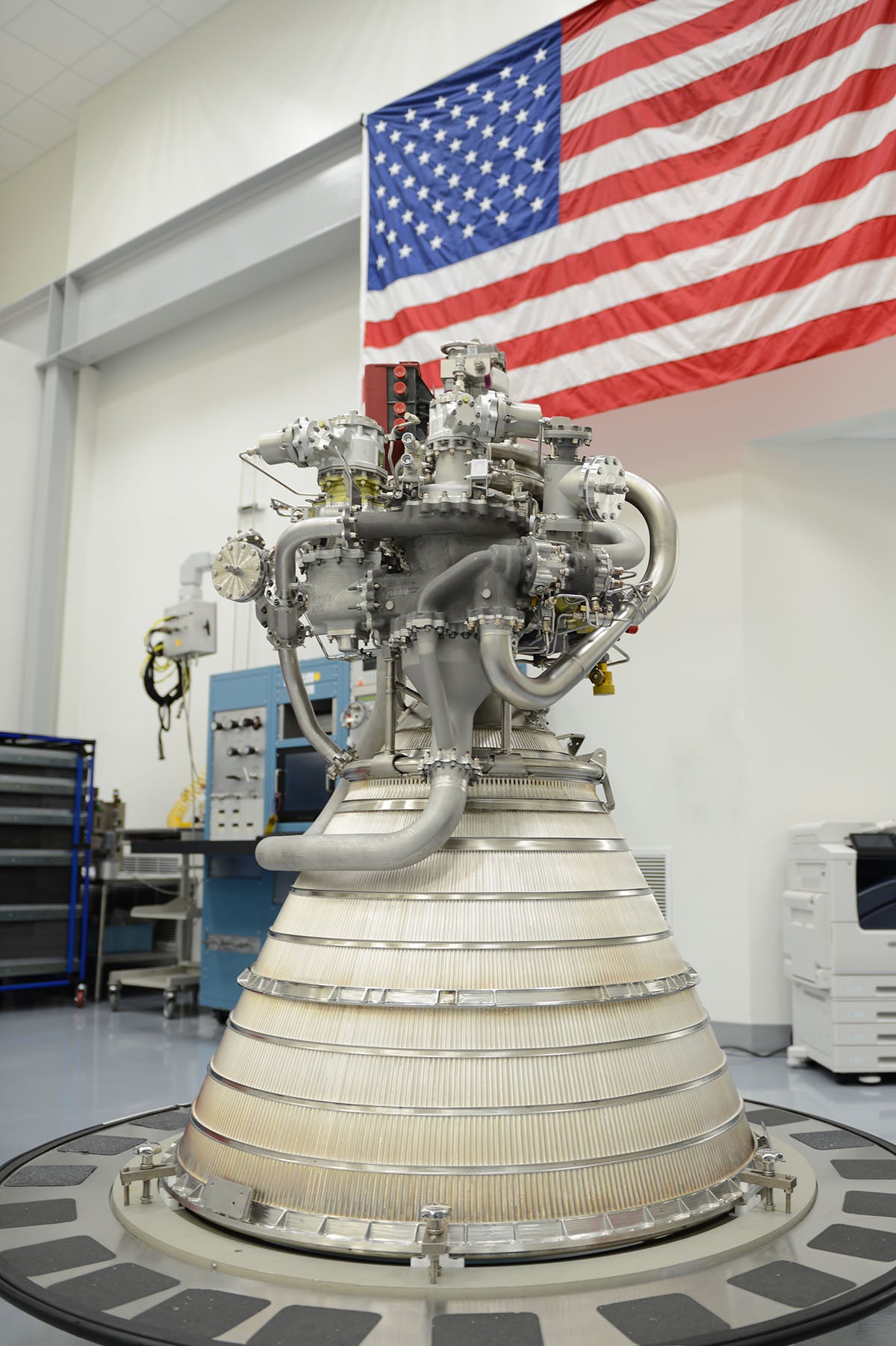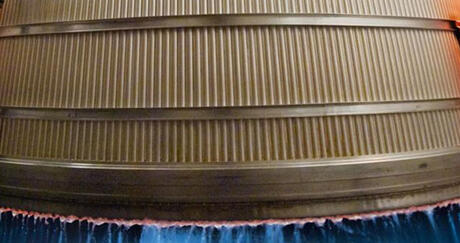WEST PALM BEACH, Fla. – What does the world’s most prolific upper-stage rocket engine have in common with the Lava Lamp, the smiley face and instant coffee?
They all debuted in 1963 and are still around 60 years later.
It’s probably safe to say, however, that the similarities — aside from perhaps enduring popularity — end there. Built by Aerojet Rocketdyne, an L3Harris Technologies company, the RL10 upper stage rocket engine is the world’s first-ever liquid-hydrogen-fueled rocket engine with well over 500 flights under its belt and occupies a class by itself.
Although it has been continuously upgraded over the years to improve performance and reduce cost, the RL10 features the same basic design today as when it debuted Nov. 27, 1963. The mission launched aboard an Atlas rocket and featured two RL10 engines powering the Centaur upper stage during the successful test. Over the next six decades, the powerful combination of Centaur and RL10 helped deliver hundreds of satellites to orbit and sent spacecraft to explore every planet in our solar system – a relationship that continues to this day.
Since its first successful flight, the RL10 has flown hundreds of missions, been integrated onto more launch vehicles, and sent more spacecraft to more places than any other rocket engine ever built.
“When you look at most rocket engines out there, they’re integrated with a launch vehicle and when that vehicle goes away, the engine goes away,” said George Prueger, Aerojet Rocketdyne senior director of RL10 programs. “The RL10, by contrast, has flown on a diverse array of vehicles including Saturn I, Atlas, Titan, Delta and even the DC-X, an experimental suborbital vehicle flown by the Defense Department and NASA that was the first to demonstrate vertical rocket landing.”
“It continues to be sought after by the space launch community because of its performance and demonstrated reliability,” Prueger said. “Put an RL10 engine on top of your vehicle and you can be confident in its unmatched reliability and performance.”
Just a few of the notable exploration missions that the RL10 helped launch are the Curiosity and Perseverance rovers currently plying the surface of Mars, the Parker Solar Probe, the New Horizons mission to Pluto and the Kuiper Belt, and the twin Voyager spacecraft that have left the solar system to become the first human-made objects to reach interstellar space. The RL10 also has supported hundreds of missions to different Earth orbits for customers including the Department of Defense, National Reconnaissance Office, National Oceanic and Atmospheric Administration and several satellite communications companies.
Although it was not part of the Saturn V rocket stack that launched astronauts to the Moon, the RL10 did pave the way for the liquid-hydrogen-fueled J2 engine that was used extensively on the Apollo flights. Modern variants of the RL10 are used on NASA’s super heavy-lift Space Launch System (SLS) rocket, which will return astronauts to the lunar surface later this decade as part of the NASA’s Artemis deep-space exploration program.
The RL10 engine’s enormously rich legacy is not even close to being complete: it is used today on multiple vehicles and the latest variant, still in development, will be flying well into the future on SLS and the new United Launch Alliance (ULA) Vulcan rocket that is set to make its inaugural flight later this year.
Early RL10 variants weighed less than 300 pounds and generated roughly 15,000 pounds of thrust in the vacuum of outer space, and typically flew in a dual-engine configuration on the Atlas rocket with a Centaur upper stage. That said, six RL10s powered the upper stage of NASA’s Saturn I S-IV rocket, which was used to launch prototypes of the Apollo Moon capsule.
“The different RL10 models flying today weigh closer to 600 pounds and generate around 25,000 pounds of thrust. Aerojet Rocketdyne has been able to boost engine thrust over the years by increasing the size of the turbomachinery and related plumbing,” Prueger said.
But the key aspect that has been at the heart of the RL10’s incredible longevity is its simple implementation of the highly efficient expander rocket engine cycle. The expander cycle eliminates the need to burn propellants to turn the turbines that drive the fuel pumps that other, less efficient engine configurations employ. The RL10 uses cryogenic liquid hydrogen to cool the combustion chamber and nozzle, where it picks up heat and turns into hydrogen gas. This expansion of hydrogen gas drives the turbine, which powers the pump.
There is another critical engine performance metric that is just as important as thrust: Specific impulse, or Isp, which is a measure of fuel efficiency like gas mileage in a car. Defined simply as the ratio of the thrust produced by a rocket engine to the rate of fuel consumption, an engine with higher specific impulse is capable of producing more thrust from the same amount of propellant.
“When it comes to Isp, the RL10 has no equal in conventional chemical propulsion,” Prueger said. “The high-performance combination of liquid hydrogen fuel and a liquid oxygen oxidizer generates more thrust per unit of fuel burned than any other propellant combination. Using this combination of propellants in a highly efficient expander cycle engine means a launch vehicle can carry less fuel, which keeps the weight down and allows more payload to be carried to orbit.”
Another characteristic of the RL10 that makes it the preferred choice of the space launch industry is the engine’s ability to make multiple restarts in space. Being able to restart the engine in the frozen vacuum of space, which is no easy feat, allows longer launch windows, increases the performance capability by enabling extended coast periods during a mission, and offers the potential to have a reusable upper stage on orbit.
In all, some 10 RL10 variants have flown in space, with many of those still in service today. However, the RL10 team is not idly standing by; they are currently in the process of qualifying a brand new version of the RL10 – the RL10C-X. This new variant will power the ULA Vulcan rocket’s Centaur V upper stage in a dual-engine configuration. The RL10C-X leverages Aerojet Rocketdyne’s industry-leading 3D printing technology and other modern manufacturing techniques to deliver the same performance and reliability at a significantly reduced cost.
In response to high demand for ULA’s Vulcan rocket, driven by a combination of U.S. national security and commercial missions, Aerojet Rocketdyne is upgrading its plant in West Palm Beach, Florida, to increase the RL10’s production rate from building one engine per month to building one engine per week.
The RL10C-X is just the latest chapter for an engine line that debuted in the formative years of the U.S. space program and has been making history ever since.
While the RL10 program has a tremendous record of accomplishment, the engine has never been used in human spaceflight. That should soon change when a ULA Atlas V rocket featuring a Centaur upper stage powered by two RL10 engines launches astronauts aboard Boeing’s CST-100 Starliner spacecraft on a test flight to the International Space Station. An RL10 will also help power NASA’s Space Launch System rocket when it sends a crew of four around the Moon for the first time in more than 50 years during the Artemis II mission scheduled for launch late next year.
“While the technology that underpins the RL10 is incredible to work with, to me, it’s all about the people – the generations that have kept this program going and the quality they have built into every engine,” Prueger added. “They have carried the RL10 program over the years, and enabled it to launch more payloads to orbit in support of our nation’s space exploration goals. I am proud to be a part of the RL10’s incredible legacy.”

The Aerojet Rocketdyne RL10 engine with an unmatched record of reliability and high-performance is the premier upper-stage engine for the Nation. This engine powers the upper stages of United Launch Alliance’s Atlas V and Delta IV Heavy launch vehicles, as well as NASA’s Space Launch System Rocket. Two RL10 engines will power the upper stage of the first Vulcan flight slated to fly later this year.
